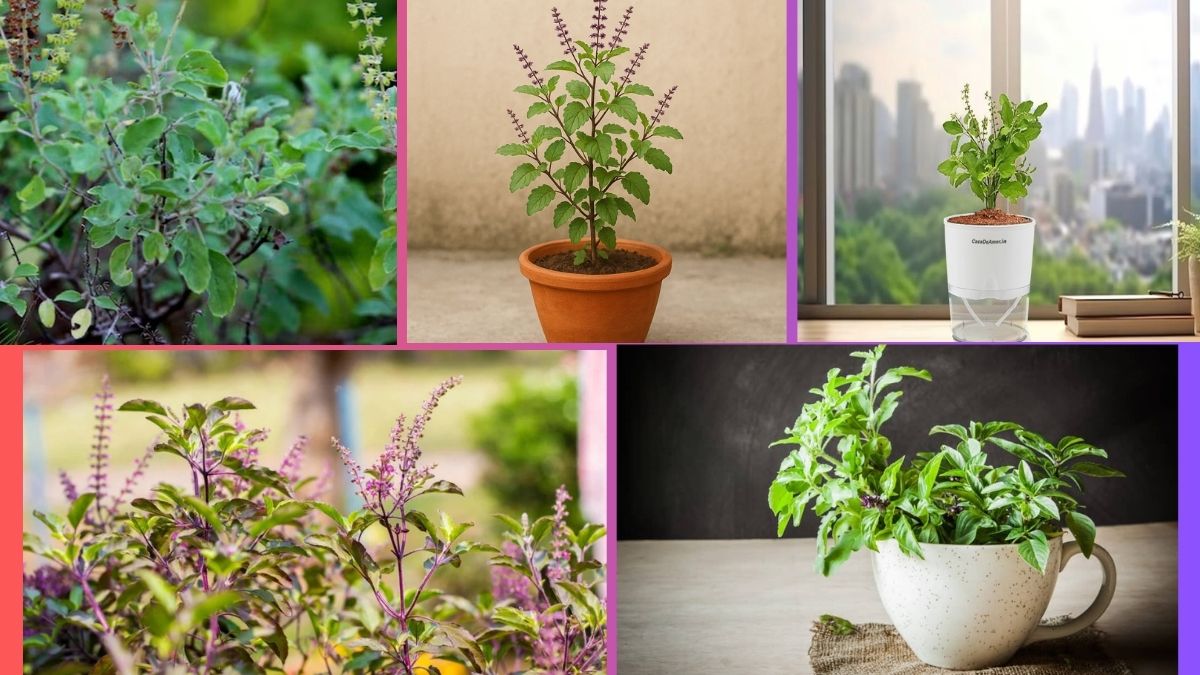Known as Holy Basil in English and revered as Tulsi in India, this sacred plant holds deep spiritual, medicinal, and cultural significance. Beyond its religious role, Tulsi is cherished for its aromatic leaves and health benefits — ranging from boosting immunity to purifying the air. Easy to grow both indoors and outdoors, Tulsi thrives with proper sunlight, well-drained soil, and — crucially — the right watering schedule.
Many plant lovers, especially beginners, wonder how often should you water a Tulsi plant? Overwatering can quickly lead to root rot, while underwatering may cause wilting and leaf drop. In this detailed guide, we’ll walk you through everything you need to know about watering Tulsi, considering seasons, plant size, environmental factors, and expert care tips.
Understanding a Tulsi Plant’s Watering Needs
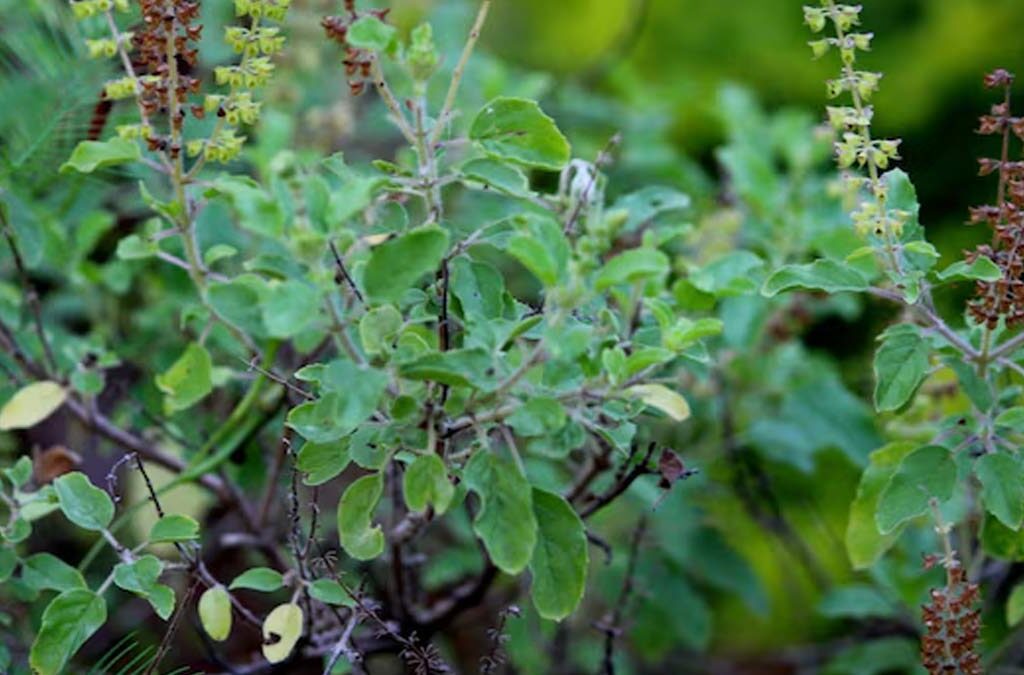
Tulsi (Ocimum tenuiflorum or Ocimum sanctum) is native to the Indian subcontinent and Southeast Asia, flourishing in warm, tropical climates. In nature, Tulsi grows well in regions with consistent, moderate rainfall and ample sunlight.
At home, it prefers well-draining, slightly moist soil — not too wet and not bone dry. Tulsi plants can tolerate brief dry spells once established, but they’ll perform best with regular, careful watering to maintain consistently moist, yet well-aerated soil.
How Often Should You Water a Tulsi Plant?

General Watering Guidelines:
- Newly Planted Tulsi: Water every 1–2 days to help it establish roots.
- Established Outdoor Tulsi: Water every 2–3 days during summer; every 4–5 days in cooler weather.
- Indoor Potted Tulsi: Water every 3–4 days, adjusting based on temperature and humidity.
Key Rule: Always water when the top 1–1.5 inches of soil feel dry to the touch.
Seasonal Watering Schedule for Tulsi
Spring and Summer (Active Growth)
Tulsi experiences rapid growth and increased leaf production in warm, sunny months. Hot weather and long days increase evaporation, requiring more frequent watering.
- In-Ground Tulsi: Water every 2 days or daily if temperatures exceed 35°C (95°F).
- Potted Tulsi (Outdoors): Water daily in very hot conditions.
- Indoor Tulsi: Water every 3 days or when soil dries out.
Tip: Water early in the morning to avoid midday heat and allow the plant to absorb moisture before the sun intensifies.
Autumn (Slower Growth)
As temperatures drop, Tulsi’s growth rate slows, reducing water requirements.
- In-Ground: Water every 3–4 days.
- Potted: Water every 4–5 days.
- Indoor: Water every 5 days or as needed.
Winter (Dormancy/Slow Growth)
In colder months or regions with frost, Tulsi may slow down or stop growing altogether.
- In-Ground (Tropical Areas): Water once a week.
- Potted (Outdoor): Water once a week or less if it rains.
- Indoor: Water once every 7–10 days, depending on room heat and light levels.
Factors That Affect Tulsi Watering Frequency
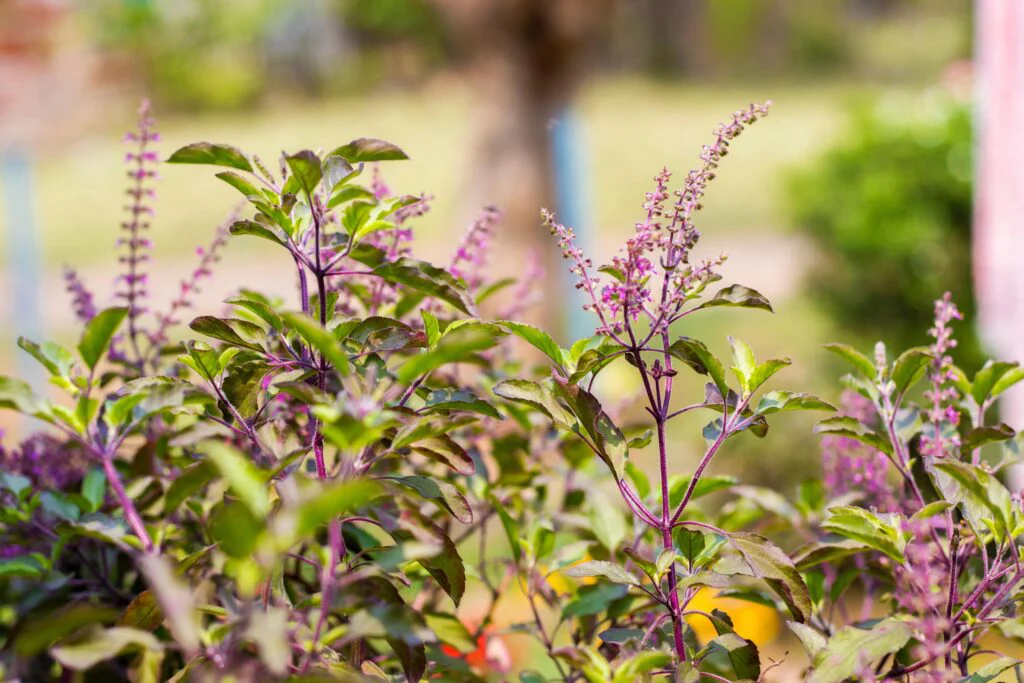
Several factors influence how often you should water a Tulsi plant:
Climate and Weather
- Hot, dry, and windy climates increase evaporation, requiring frequent watering.
- Cool, humid, or rainy weather reduces the need for water.
Soil Type
- Sandy soil: Drains quickly and dries out fast.
- Clay soil: Retains moisture longer but needs good drainage to avoid waterlogging.
- Loamy soil: Ideal for Tulsi, holding moisture while allowing excess water to drain.
Tip: Use a potting mix with sand, compost, and garden soil in a 1:1:1 ratio for potted Tulsi.
Container Size and Material
- Smaller pots dry out faster than larger ones.
- Terracotta pots allow moisture to evaporate, while plastic or glazed ceramic pots retain water longer.
Plant Maturity
- Young Tulsi plants need consistent moisture.
- Mature plants can tolerate brief dry spells but still prefer consistent, moderate watering.
How to Properly Water a Tulsi Plant
Water Deeply and Evenly
When watering, ensure moisture reaches the plant’s entire root system. Water slowly and thoroughly until you see water draining from the bottom of the pot or the soil feels evenly moist to a depth of about 6 inches in garden beds.
Check Soil Moisture Before Watering
Insert your finger about 1–1.5 inches into the soil. If it feels dry, it’s time to water. If it’s still damp, wait another day.
Water at the Base
Avoid wetting the leaves frequently, as moisture on foliage can invite fungal diseases. Always direct water toward the soil near the plant’s base.
Use Room-Temperature Water
Cold water can shock the roots. Use water at room temperature for best results.
Signs of Overwatering and Underwatering in Tulsi
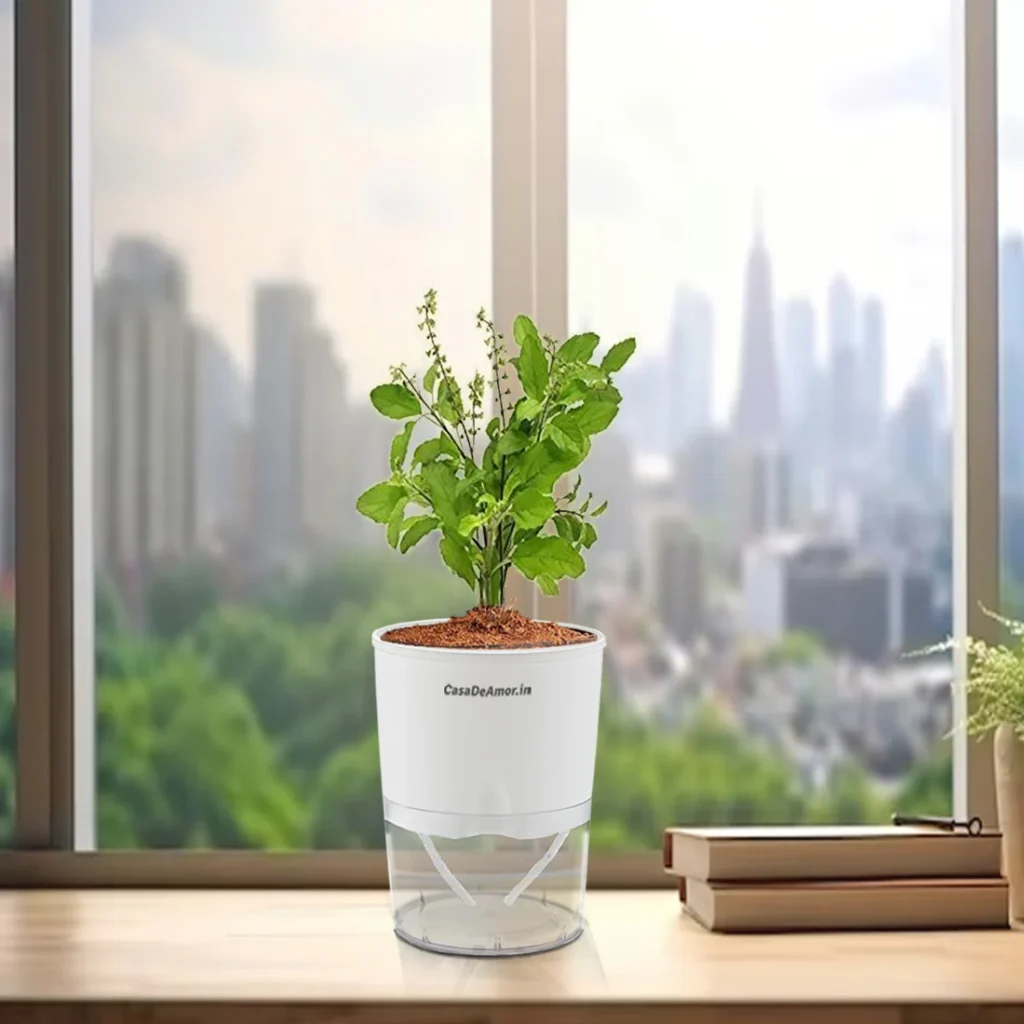
Recognizing early signs of improper watering can help you correct problems before they harm your plant.
Signs of Overwatering:
- Yellowing leaves
- Wilting despite moist soil
- Soft, blackened stems
- Mold or fungus on the soil surface
- Root rot (roots appear dark and mushy)
Solution: Reduce watering frequency, improve soil drainage, and remove affected leaves.
Signs of Underwatering:
- Drooping, curling leaves
- Dry, brittle leaves and stems
- Stunted growth
- Soil pulling away from pot edges
Solution: Water deeply and adjust the watering schedule, particularly in hot or dry spells.
Special Watering Tips for Potted Tulsi
Tulsi grown in containers requires extra attention because potted soil tends to dry out faster:
- Use well-draining, organic-rich potting mix.
- Ensure pots have drainage holes to prevent water stagnation.
- In summer, check soil moisture daily.
- Avoid leaving standing water in drip trays.
Additional Tulsi Care Tips
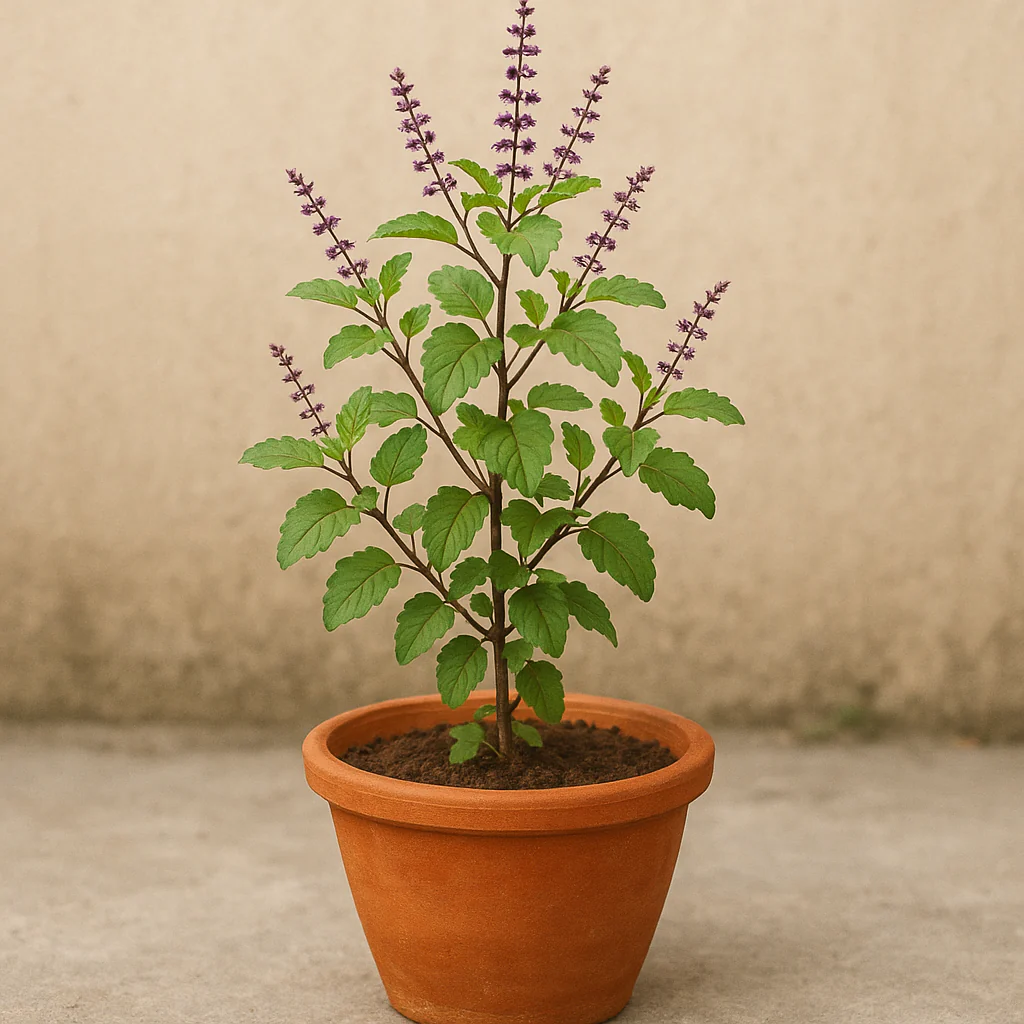
To help your Tulsi thrive along with the right watering routine:
Provide Ample Sunlight
Tulsi loves 6–8 hours of direct sunlight daily. Indoors, place it near a south-facing window or balcony.
Regular Pruning
Pinch off flowers and trim the top leaves regularly to promote bushier growth and prevent the plant from becoming leggy.
Fertilize Sparingly
Feed with diluted organic liquid fertilizer or compost tea once a month during the growing season.
Watch for Pests
Keep an eye out for aphids, mealybugs, and whiteflies. Use neem oil or organic soap sprays if needed.
Conclusion
So, how often should you water a Tulsi plant?
It depends on your local climate, season, soil type, container size, and plant maturity:
- Newly planted Tulsi: Water every 1–2 days.
- Established outdoor Tulsi: Water every 2–3 days in summer, every 4–5 days in cooler weather.
- Indoor potted Tulsi: Water every 3–4 days, adjusting based on room temperature and humidity.
The secret to a thriving Tulsi plant lies in maintaining consistently moist but not soggy soil, monitoring soil moisture before watering, and adjusting your routine with seasonal changes.
By following these watering practices and complementary care tips, your Tulsi plant will stay lush, fragrant, and healthy — providing beauty, flavor, and spiritual enrichment to your home.
